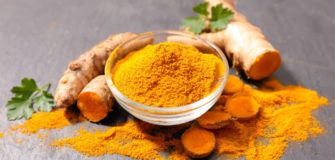Yoga – Atharva Mudra Kavach
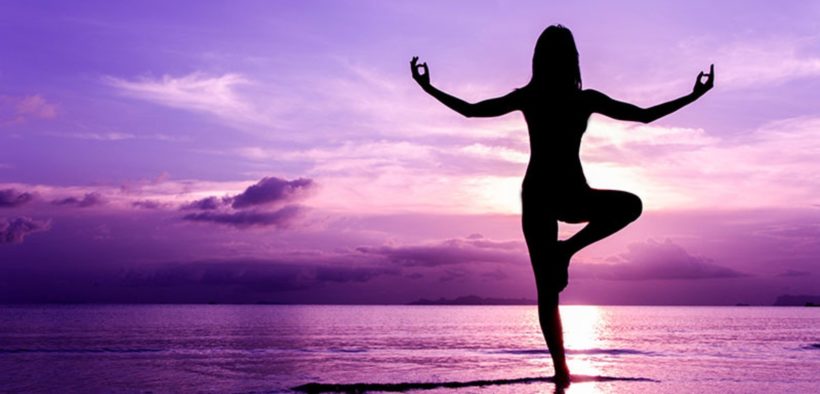
YOGA: Yoga is the best and effective discipline to improve or develop one’s inherent power in a balanced manner. Invented and developed in India about 5000 years ago. Yoga was first mentioned in the oldest sacred texts, the Rig Veda. Yoga offers a bold means to attain complete self-realization. The literal meaning of the Sanskrit word Yoga is ’Yoke’.
In this article, we are discussing Atharva Mudra Kavach.
Dr. Ulhas Ganu
Genesis of the Name
- Atharva is one of the names of Shri Ganesh.
- Kavach in Sanskrit means Shield which typically protects the warrior.
- Atharva Shirsha is Ganesh Stotra (Prayer).
- Through the recitation of this prayer the devotee requests the Lord to protect him from all the 10 directions: viz. East (पूर्व), West (पश्चिम), South (दश्चिण), North (उत्तर), North-East (ईशान्य), South-East (आग्नेय), South-West (नैऋत्य), North-West (र्ायव्य), Up (ऊर्धर्व) and Down (अध:).
- Hooking clawed fingers like Ganesh Mudra in all the 10 directions gives an excellent exercise to the biceps, triceps, the forearms and shoulder muscles. Different muscles are worked upon because of positioning of muscles at different angles. In a way it is seeking protection from all directions.
Points to Remember:
- Hitherto unreported or described, this is a new adaptation of Ganesh Mudra by extending the logic of protection from the Atharva Shirsha.
- Atharva Kavach is practiced in standing position to cover movement in all the directions
- This results in the pull by gravity on different set of muscles when we assume different positions.
- East is considered as the direction in front of us and backside is the West.
- That makes reference to other directions automatically.
- The fundamental principle of breathing pattern followed in Atharva Kavach is similar to Ganesh Mudra: arms relaxed while ‘breathing in’ and stretched while ‘breathing out’. Conducted at various levels, the process imparts excellent and remarkable strength to the biceps, triceps, the forearms and shoulder muscles.
- Only one ‘Inhalation’ followed by ‘Exhalation’ at each step is desirable, which also gives excellent work-out to all the involved muscles.
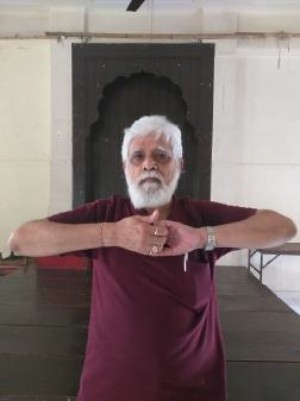
Method:
- Stand erect with a comfortable distance of about 1 foot between the feet. This gives better stability to the posture.
- Hands are by the side of the body.
- Start the process exactly as described below as the consecutive positions balance out the movement of complimentary muscles.
- While working on the left side it is convenient to keep left hand above and right hand below. Similarly while working on the right side, it is convenient to keep the right hand above and left hand below. This helps during the pulling action.
1. Yoga Name: Purva Atharva Mudra (East):
Folding arm at the elbow joint and twisting the forearm a little, bring the left hand nearer to the chest. Fingers curled a little, place backside of the palm on the chest. Likewise, folding and twisting the right arm a little, bring it nearer to the left hand and hook the fingers. Relax arms while ‘breathing in’ and pulling them during exhalation.
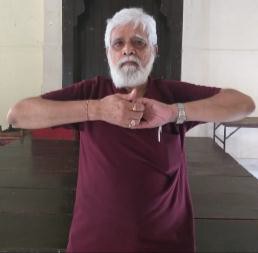
2. Yoga Name: Paschima Atharva Mudra (West):
First take the right hand behind and place back of the hand in the upper back region. Taking left hand back, hook the fingers of right and left hand into each other. Shoulder straight and arms are relaxed during inhalation. Pull the arms during exhalation.
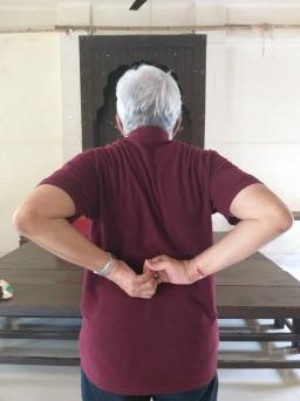
3. Yoga Name: Dakshina Atharva Mudra (South):
Turn to right (without bending) at the waist, hooking fingers. Observe that the left hand is below and the right hand is above. Shoulders straight, arms are relaxed during inhalation. Pull the arms during exhalation.
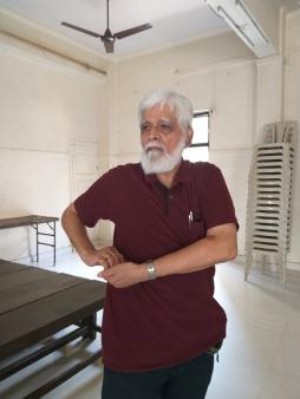
4. Yoga Name: Uttara Atharva Mudra (North):
Turn to left (without bending) at the waist, hooking fingers. Observe that the left hand is above and the right hand is below. Shoulders straight, arms are relaxed during inhalation. Pull the arms during exhalation.
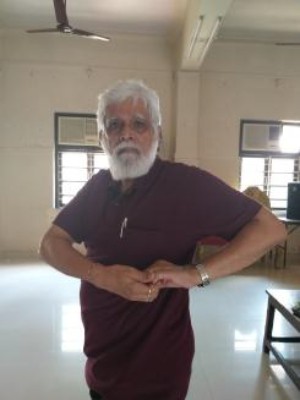
This completes the basic four directions. Then we turn to sub-directions.
5. Yoga Name: Ishanya Atharva Mudra (North-East):
For this, bend a little at the waist on left side while fingers are hooked as shown in figure ….. Observe that the left hand is above and the right hand is below. Arms are relaxed during inhalation. Pull the arms during exhalation.
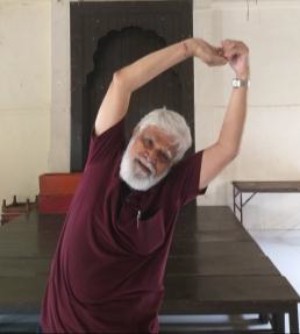
6. Yoga Name: Agneya Atharva Mudra (South-East):
For this, bend a little at the waist on right side while fingers are hooked as in Fig. ….. Observe that the right hand is above and the left hand is below. Arms are relaxed during inhalation. Pull the arms during exhalation.
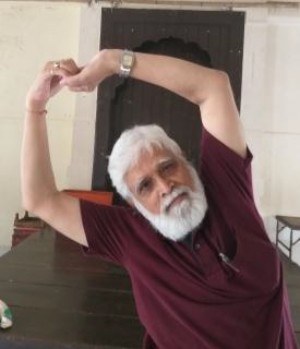
7. Yoga Name: Nairutya Atharva Mudra (South-West):
For this, bend a little at the waist on right side while fingers are hooked as in Fig. ….. Observe that the right hand is above and the left hand is below. Arms are relaxed during inhalation. Pull the arms during exhalation.
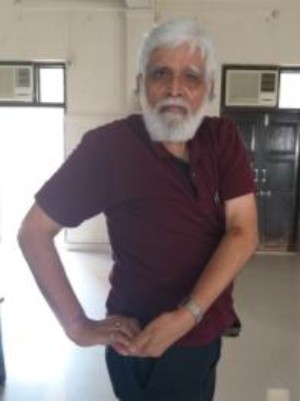
8. Yoga Name: Vayavya Atharva Mudra (North-West):
For this, bend a little at the waist on left side while fingers are hooked as in Fig. ….. Observe that the left hand is above and the right hand is below. Arms are relaxed during inhalation. Pull the arms during exhalation.
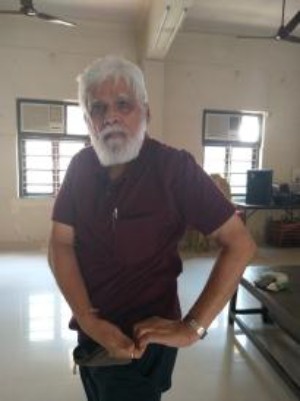
Having covered the 8 directions (4 main directions and 4 Sub-directions), we need to cover 2 more directions, namely above head or up (ऊर्धर्व) and towards the ground or down (अध:)
9. Yoga Name: Urdhva Atharva Mudra (Skyward: ऊर्धर्व : arms directed above head):
For this Mudra position raise arms above head. Forehand and the upper arms are folded at a comfortable angle of about 90-degree to make it easy to pull the arms. The hands with hooked fingers are about 6 to 9 inches above head (more in case of tall people). Arms are relaxed during inhalation. Pull the arms during exhalation.
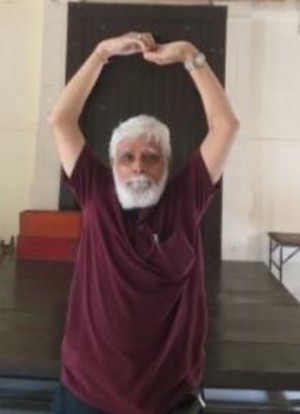
10. Yoga Name: Adhah Atharva Mudra (Downward अध: : hands directed towards the ground):
For this Mudra position lower arms below waist. Forehand and the upper arms are folded at a comfortable angle of about 90-degree to make it easy to pull the arms. The hands with hooked fingers are about 6 to 9 inches below the waist. Arms are relaxed during inhalation. Pull the arms during exhalation.

11. At the end of the practice, bring hands by the side of the body and relax.
Since the Atharv Mudra Kavach gives sound exercise to the muscles of the upper body viz. the shoulders, shoulder blades, biceps and the triceps. Hence relaxing these muscles is important for maintaining their health. Have a 1 to 2 minute relaxation in Sulabha Makarasana or Shavasana to relax the muscles quickly.
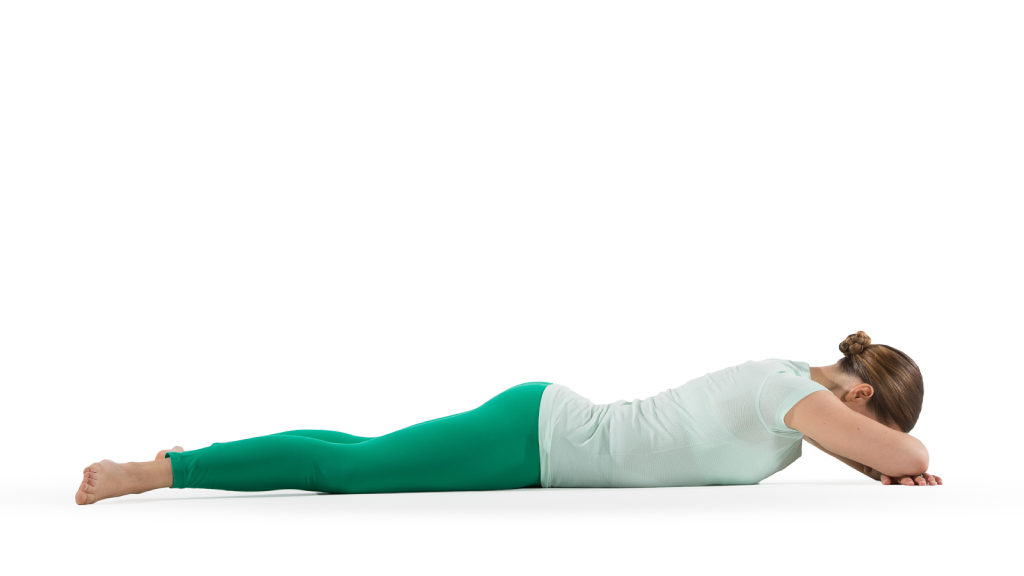
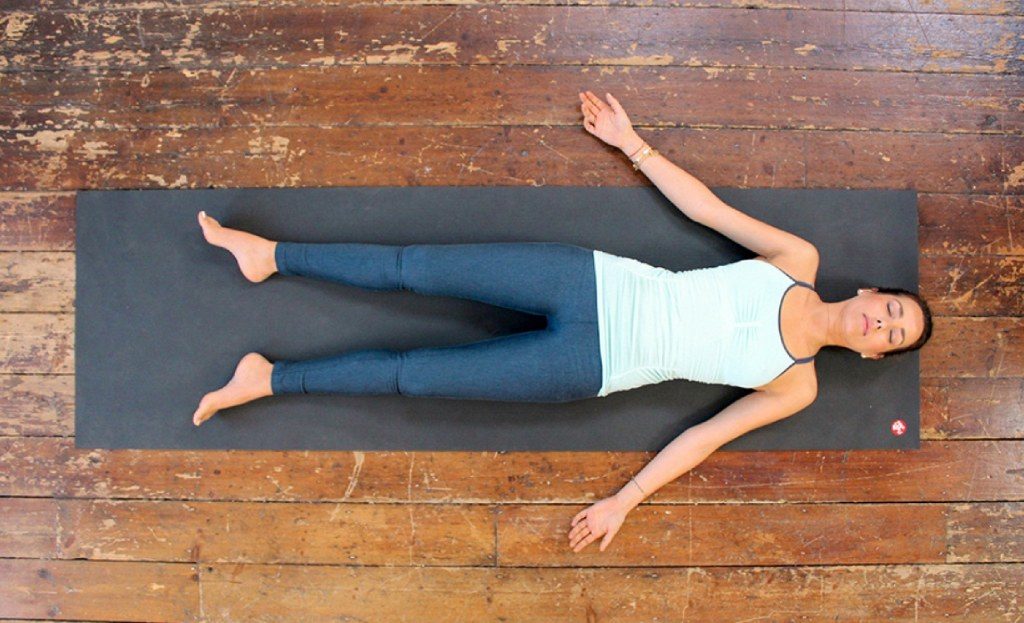
Contraindications and Precautions:
- People with rheumatoid arthritis may not be able to hook the fingers.
- Rigid elbow joints may make even the small twist at the elbow difficult which makes them unable to place hands at the chest as depicted in Fig…..
- People with cardiac problem should consult their doctor before taking to this Kavach as it is more difficult compared with Ganesh Mudra.
Special Precautions:
Remember, ‘Pulling’ the arms (during exhalation) results in isometric exercise at the arms level. Hence to avoid muscle ache alternate relaxation (during inhalation) and pulling (during exhalation) needs to be observed strictly.
Benefits:
- On spiritual level, since Atharva Mudra Kavach covers all the levels of body, it can be visualized to stimulate all the 7 Chakras defined in Yogic text, which is considered as advancement in spiritual aspects.
- Pulling arms while keeping them stationary results in an isometric exercise, which results in strengthening of the arms, biceps, triceps, shoulders and shoulder blades.
- Strengthening of the upper back muscles is an unusual incidental benefit obtained through the practice of Atharva Mudra Kavach.
- Strengthening of upper back muscles and the neck and shoulder muscles together offers a great protection against cervical spondylosis. This offers special benefit for those working on computers.
- Regular practice of Atharva Mudra Kavach will offer protection against cervical spondylosis.
- It is claimed to influence the metabolic processes positively.
Positivity:
- By practicing the Atharva Mudra Kavach at the start of Yogic activities is in itself a beginning on a positive and incredible note by looking forward to removal of obstacles.
- The strengthening of muscles of upper body- the arms, shoulders and the upper back improves gait making the body-frame elegant, which reflects in increased and improved confidence of the practitioner.






